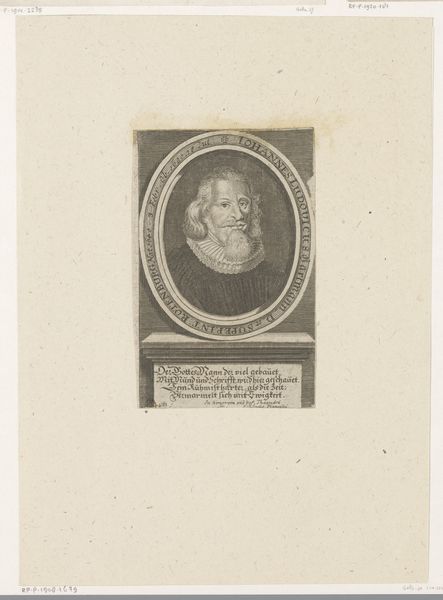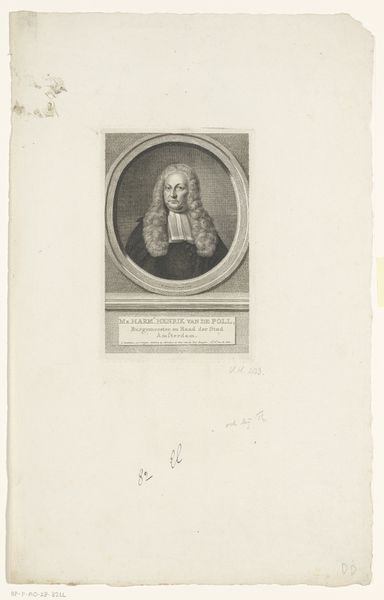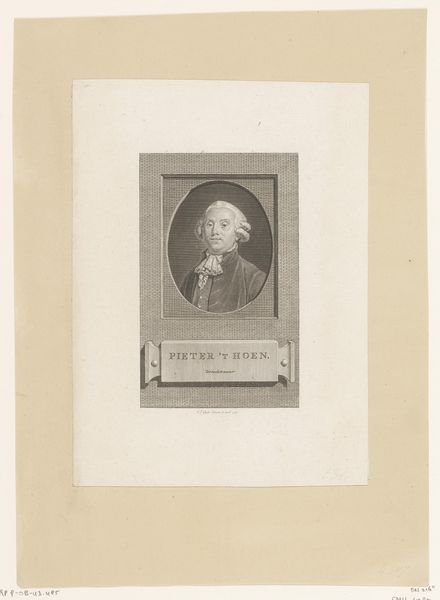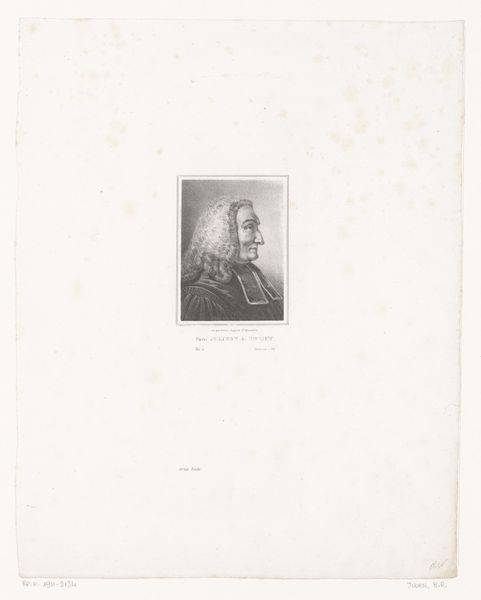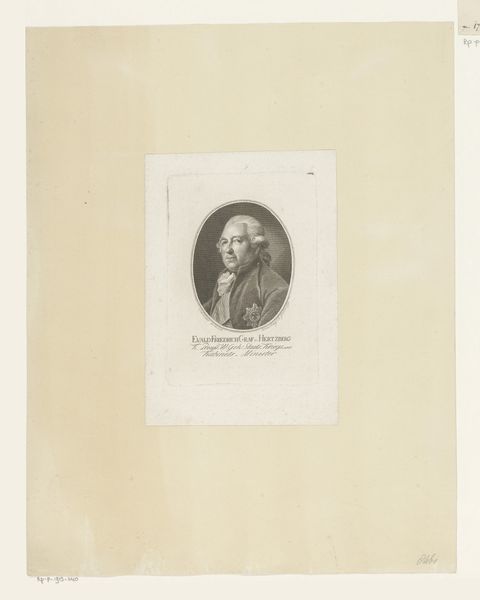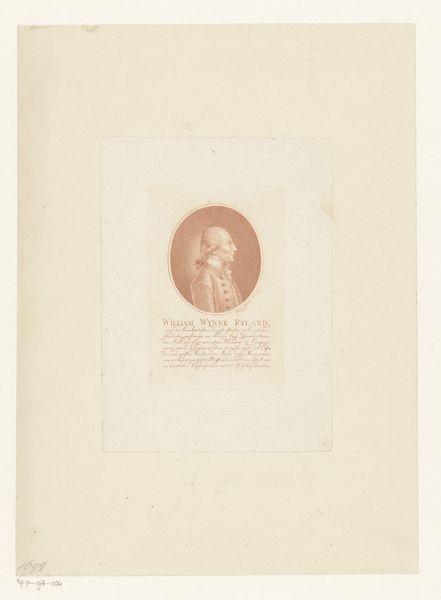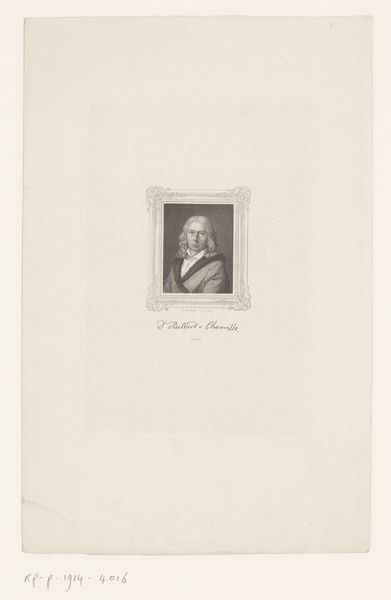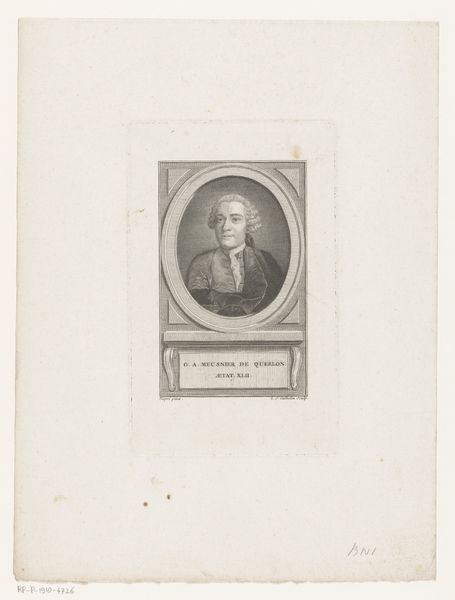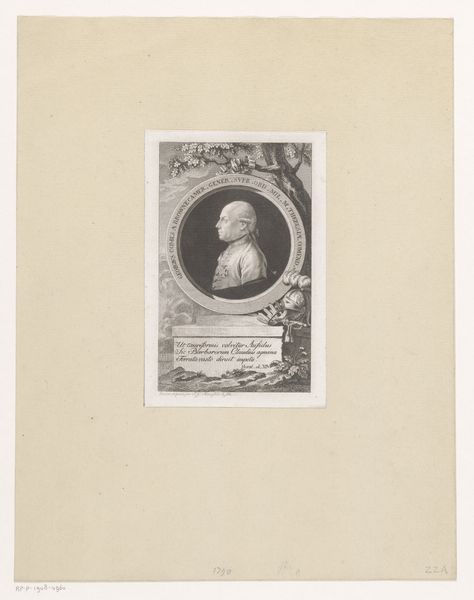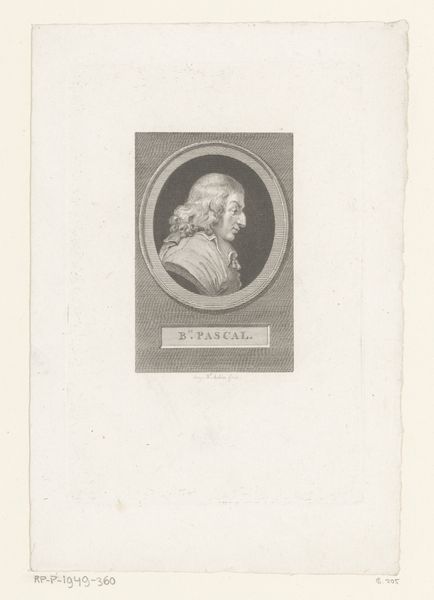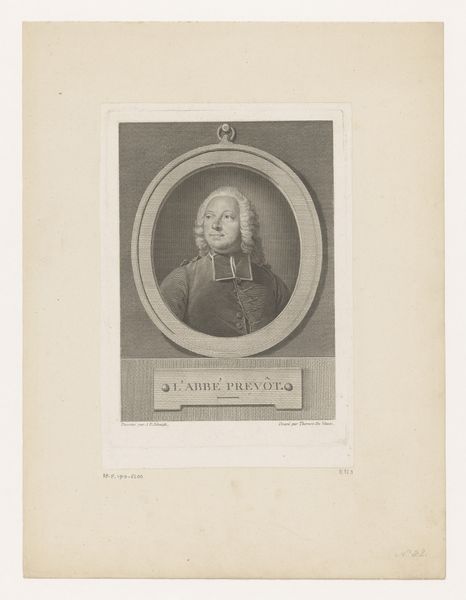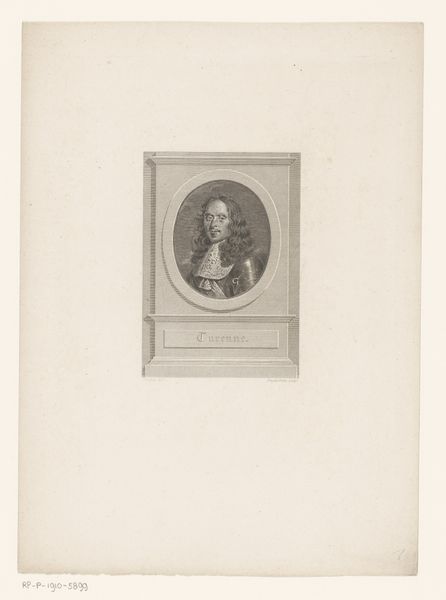
print, engraving
#
portrait
#
baroque
# print
#
figuration
#
history-painting
#
engraving
Dimensions: height 165 mm, width 100 mm
Copyright: Rijks Museum: Open Domain
This is a portrait of Johann Friedrich Wilhelm Jerusalem, made by Johann David Schleuen in the eighteenth century. It’s made of ink on paper, which has been engraved to produce fine lines and tonal contrasts. Engraving is an intaglio process: the artist uses a tool called a burin to directly cut lines into a metal plate. This requires significant force and control. The plate is then inked, and the surface wiped clean, leaving ink only in the engraved lines. When the plate is pressed against the paper, the image is transferred. It’s a demanding process, requiring planning and skill. The labor involved in creating this image is part of its value. Each print pulled from the plate would have been nearly identical, making it ideal for distributing portraiture widely. As you can see here, the mechanical reproduction also gives the image a sense of authority and objectivity. Considering these aspects of materials, making, and context helps us to understand the full meaning of an artwork, challenging traditional distinctions between fine art and craft.
Comments
No comments
Be the first to comment and join the conversation on the ultimate creative platform.
